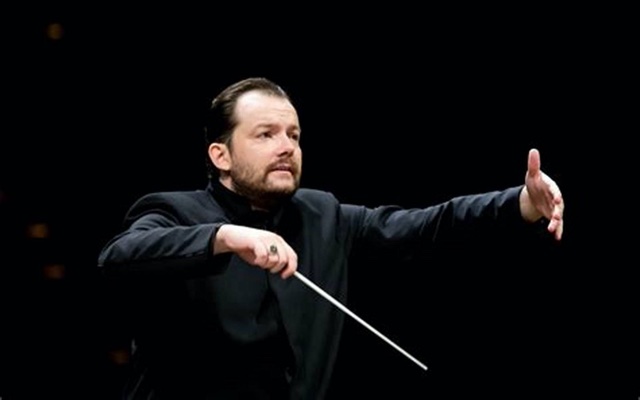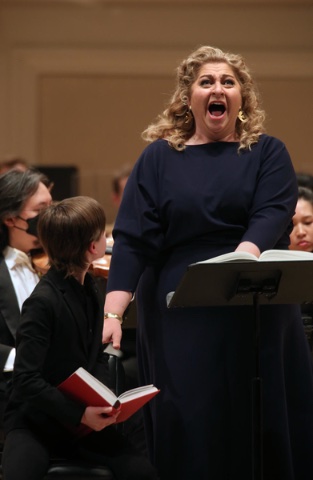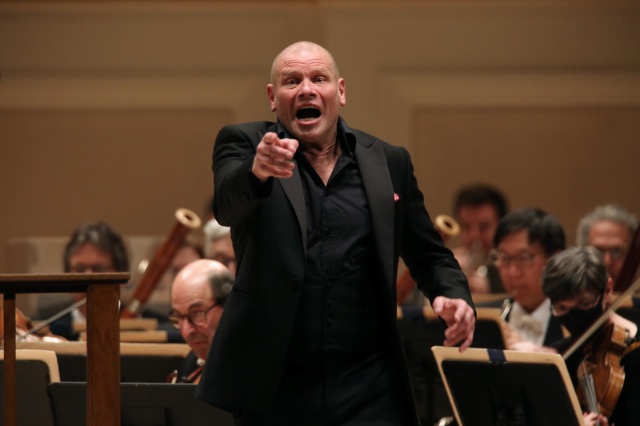Boston Symphony Performs Stunning Wozzech
Carnegie Hall Hosts
By: Susan Hall - Mar 16, 2022
The Boston Symphony with Andris Nelsons at the helm performed Alban Berg’s Wozzeck at Carnegie Hall. The composer left an early performance of Georg Buchner’s play on which the opera would be based, remarking: This must be an opera and I will compose it.
It was 1914 and World War I intervened. The opera was completed in 1922 and first produced in 1925. The composer’s intention to create a work which moved performers and audience alike in its approach to dramatic music was realized in spades. He gives us a portrait of a world torn apart and of man’s inhumanity to his fellow men. Berg intended a lay audience to easily understand his compositions.
Berg’s teacher, Arnold Schoenberg, had at first resisted his student’s work. Yet he understood Wozzeck, which he immediately endorsed and promoted.
Many voices speak in the opera. The full orchestra in preludes, postludes and interludes provides emotional texture and color. Individual instruments and small ensembles have their own characters in ‘speaking' roles. Christine Goerke as Marie brings lush textures to her line. Bo Skovhus in the title role gives us rich, musically-spoken words.
Structured in three acts, each with five individual scenes, the parts are welded into a single span. The whole is held together by a series of thematic interrelationships and transformations. A minor accompanying part may reappear as a main melodic idea. A secondary theme in one movement is the main theme of another. Palindromes are a favorite device.
Berg spoke often about the need for both variety to keep the work engaging and also cohesion. Individual scenes are unmistakable in their character, self-contained and still part of a single large-scale design. Rhythmic patterns form their own motifs and are often vehicles for pitch structures. Traditional forms, lyrical expansiveness, ministaure pieces and large dramatic gestures are deployed. Berg wrote: “It is imperative to use everything essential for the creation of individualizing characteristics on the one hand, and coherence on the other. No one pays attention to the forms.”
Andris Nelsons conducts to bring forth each of these musical lines from the orchestra and from the singers. A challenge met with seemingly comfortable control. From the first strike of a drum and whoosh of the whisk to the final sad “Ring Around a Rosie” of the town’s children, including Marie and Wozzeck’s son, we are invited into the emotional heart of the work. Symmetries are revealed. The oboe melody which opens the opera and the trombone which concludes the final scene reverberate. The fanfaire figures that frame a scene are all detailed. Ascending and descending octaves provide transitions.
Forms like a baroque suite and a passacaglia represent psychological or dramatic purpose of a scene. Relationships between text and music are revealed. Themes associated with characters are brought forth as their shapes and harmonies are also repeated.
This rich work got its full due at Carnegie Hall. We could feel the terror of a person present in a world fundamentally hostile and inhuman.
This concert version was simply yet beautifully staged. Singing actors entered and exited through the side stage doors at just the right time and with just hte righ motions and gestures. Only once was the fourth wall broken, when two characters appeared before the first row of orchestra seats. This surprise appearance was effective.
The music of the singing artists ranges from a glorious articulation of language by baritone Bo Skovhus in the title role to the lush, lovely soprano of Christine Goerke. Both leads are superb actors. Goerke’s hands in expressive motion are memorable. This is a different voice from her Wagner helden soprano, and suits the role of the maternal and erotically desirous Marie to a tee.
Goerke and Skovhus lead a stellar cast. Blabbering Captain (Toby Spence), who nails details like first words introduced by the english horn in a theme that will be associated with him. He speaks of 360 months stretching out before him.
The proto-Nazi Doctor (Franz Hawlata), the two bumbling apprentices (Zachary Altman and David Kravitz), the mellow Andres (Mauro Peter), breast-thumping Drum Major (Christopher Ventris), all were superb. Minor roles performed by Margret (Renée Tatum), the idiot (Alex Richardson), and Marie’s little boy (Linus Schafer Goulthorpe, who held Marie’s Bible in Act III, shone.
Wozzeck the play was based on a real incident. Yet both the play and opera have a heightened and distorted sense of reality. Wozzeck is a simple not a bad man who is driven crazy by an inhumane society. This is where we the audience dwell for most of the opera. Only at the very end is Berg’s own human sympathy shown in the work. Tough stuff that thrilled the Carnegie audience. (A smattering of audience members, young and old, could not take it and exited before the conclusion. It still feels very modern).
The audience succumbed to the magic of the voices, both those of the artists and those of the orchestra. Often at the frontiers of intensity, the singing voices give way to the spoken melody.
Berg took thirteen curtain calls after the Vienna Premiere. At Carnegie, there is no curtain, but the audience would not let the performers leave the stage at the work’s conclusion.
Tbe Boston Symphony artists and guest artists gave the audience a chance to share their dramatic and musical experience of this work, not to merely stand outside as spectators. This goal of the composer’s was remarkably achieved at Carnegie Hall.
For another chance to hear Nelsons and the superb orchestra, try Tanglewood.
For a more comprehension discussion of the performing artists, Andris Nelsons and the Boston Symphony, here is a link to my colleague Eli Jacobson's review.








